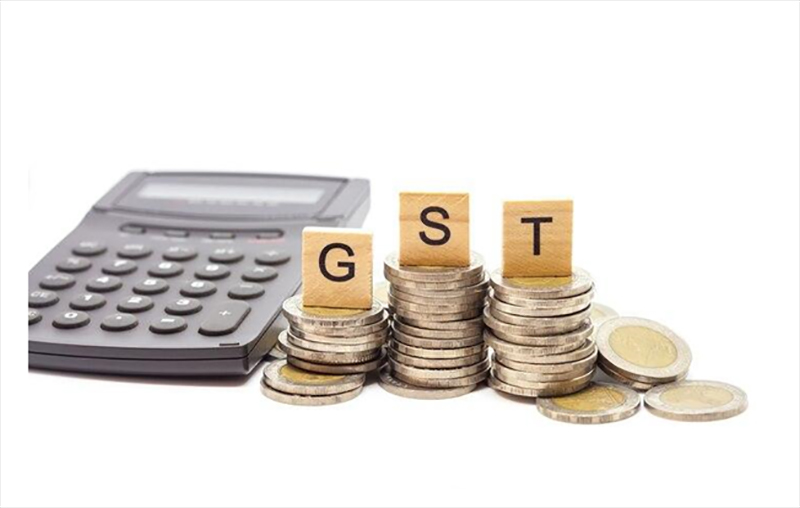 GST
GST In the realm of e-commerce, GST Payment represents a significant aspect that businesses need to handle efficiently. The introduction of the Goods and Services Tax (GST) in India marked a revolutionary tax reform aiming to subsume multiple indirect taxes into a unified system. However, for e-commerce businesses, it has brought along its own set of challenges. This article will dive deep into these challenges and introduce you to feasible solutions to significantly ease the process.
Understanding GST for E-commerce
Before we delve into the complications, we must grasp what GST for e-commerce means. GST, short for Goods and Services Tax, is a comprehensive, multi-stage, destination-based tax levied on every value addition. In simpler terms, it's a tax on the supply of goods and services. E-commerce businesses are no exception to this tax regime. The GST framework for e-commerce is complex and often needs clarification, especially for those new to the sector.
● The Role of GST: It plays a crucial role in maintaining transparency in the financial transactions of e-commerce businesses. However, navigating through the tax layers can be daunting, given its layered structure.
● Tax Payment Gateways: As complicated as it may seem, tax payment gateways relieve businesses grappling with GST Payment. These gateways act as a bridge between taxpayers and the government, simplifying tax payments.
Challenges in GST Payments for E-commerce
Despite the above mentioned solutions, the path to smooth GST payments is challenging. E-commerce businesses face several challenges, with some of the key ones being:
● Complex GST Structure: Understanding the layered structure of GST can be taxing. For instance, if we take the example of an online retailer, Rohan, selling goods across various states in India, he needs to have a comprehensive understanding of CGST, SGST, and IGST and when to apply each.
● Timely and Accurate GST Payment: Ensuring payments are made on time and are accurate is another hurdle. For instance, if an e-commerce platform generates INR 100,000 in sales, with an 18% GST, they have to pay GST online to the tune of INR 18,000.
● Managing GST Refunds: This is particularly critical for businesses with excess input tax credit. For example, Kavita runs an e-commerce clothing brand. For the GST she paid while purchasing raw materials, she is entitled to a GST refund. Getting this refund on time can be a significant challenge.
● Keeping up-to-date with Changing Tax Regulations: The tax regulations in India frequently change. Businesses need to stay abreast of these changes to avoid penalties.
The Power of Digital Solutions in Streamlining GST Payments
The digital revolution in the financial sector brings solutions to address these challenges. Leveraging technology in tax compliance can turn these hurdles into smooth stepping stones.
● Digital Revolution: The financial sector is witnessing a massive digital transformation from mobile banking to digital wallets. Digital solutions are deployed in the taxation realm to simplify tax compliance as it has spilled over into this area.
● Tax Payment Gateway: A digital tax payment gateway allows businesses to pay GST online easily. These gateways come equipped with user-friendly interfaces, ensuring a seamless transaction process.
Overcoming Challenges with Technology-driven Solutions
Technology isn't just an enabler; it's a problem-solver. Regarding GST payment issues, tech-driven solutions are making strides in simplifying e-commerce business processes.
● Instant Tax Payment: Tech-enabled tax payment solutions provide the facility to make instant payments. It means no more waiting for checks to clear or dealing with bank hours. You can settle your GST dues anytime, anywhere, with a few clicks.
● Bulk Payment Facility: For larger e-commerce businesses dealing with numerous transactions, the facility to make bulk payments comes as a boon. For instance, an online marketplace with hundreds of vendors can easily make bulk GST payments for all transactions in one go.
● API Integration: The option to integrate with APIs for full automation of direct tax payments is another tech-driven solution. As an e-commerce business owner, you can be rest assured that manual data entry and errors are not a concern.
The Future of GST Payments for E-commerce – Innovative Solutions on the Horizon
While technology has significantly eased paying GST online, the future holds more promising solutions. Innovations like GST Lending and GST Payment Gateway could change how e-commerce businesses handle their tax payments.
● GST Lending: This concept allows businesses to take a loan against their GST receivables. If implemented, this could provide businesses with the necessary working capital, thereby solving cash flow issues.
● GST Payment Gateway: As futuristic as it sounds, the concept of a dedicated GST payment gateway is on the horizon. This innovation would simplify the entire process, making GST payments a breeze for e-commerce businesses.
Conclusion
Indeed, GST Payment for e-commerce businesses is laden with challenges. However, by having a solid understanding of the tax framework and using technology appropriately, businesses can convert these challenges into opportunities for seamless tax compliance. The future holds even more promising solutions, and it's only a matter of time before GST payments become a straightforward task.
Support Our Journalism
We cannot do without you.. your contribution supports unbiased journalism
IBNS is not driven by any ism- not wokeism, not racism, not skewed secularism, not hyper right-wing or left liberal ideals, nor by any hardline religious beliefs or hyper nationalism. We want to serve you good old objective news, as they are. We do not judge or preach. We let people decide for themselves. We only try to present factual and well-sourced news.







